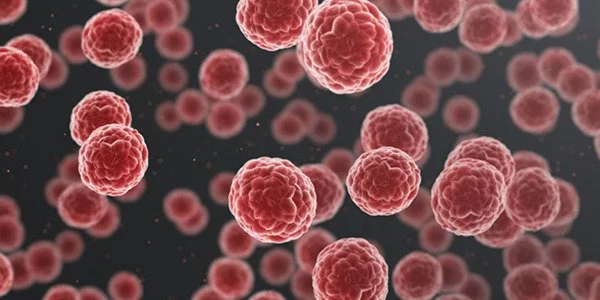Copper (Cu) is a micronutrient that is required for the development and replication of all eukaryotes. Copper cannot be created or destroyed by metabolic processes, so it must be obtained from outside sources. Copper’s incorporation into living systems is thought to have occurred at the same time as the release of molecular oxygen into the Earth’s early atmosphere.
Cancer cells require proteins that bind copper ions in order to grow and spread throughout the human body. New research into how cancer-related proteins bind metal and interact with other proteins paves the way for potential new cancer drug targets.
Human cells require trace amounts of copper to carry out essential biological processes. Copper levels in tumor cells and blood serum from cancer patients have been found to be elevated in studies, leading to the conclusion that cancer cells require more copper than healthy cells. Higher copper levels indicate more active copper-binding proteins.
“As a result, these proteins are extremely important to study when it comes to understanding the development of cancer,” says Pernilla Wittung-Stafshede, professor of chemical biology at Chalmers University of Technology in Sweden.
This increases the risk that the tumor will become overly reliant on copper, which can cause chemical reactions that are harmful to cancer cells. We believe that Memo1 protects cancer cells by binding copper when needed, allowing them to continue to live and spread.
Pernilla Wittung-Stafshede
Most cancer-related deaths are due to the fact that metastases—secondary tumors—form in several places in the body, for example, in the liver or lungs. A protein called Memo1 is part of the signaling systems that cancer cells use to grow and spread around the body. Previous research has shown that when the gene for Memo1 is inactivated in breast cancer cells, their ability to form metastases decreases.
A research group from Chalmers wanted to take a closer look at the connection between Memo1 and copper. In a new study published in the scientific journal PNAS, the researchers examined the Memo1 protein’s ability to bind copper ions through a series of test tube experiments.

They discovered that the protein binds copper, but only the reduced form of copper. It is this form of copper ions that is most common in living cells. It’s an important discovery because reduced copper, while it is needed in the body, also contributes to redox-reactions that damage—or even kill—the cells. The researchers found that when Memo1 interacted with copper, the metal’s toxic redox reactions were blocked.
“This increases the risk that the tumor will become overly reliant on copper, which can cause chemical reactions that are harmful to cancer cells. We believe that Memo1 protects cancer cells by binding copper when needed, allowing them to continue to live and spread” Pernilla Wittung-Stafshede, one of the study’s lead authors, says
Memo1 can also form a complex with another copper-binding protein found in our cells, Atoxi1. It is a copper transporter inside human cells, and previous research has shown that Atox1, with the help of copper, contributes to the ability of breast cancer cells to move and form metastases. Overall, the findings in the new study mean that copper and copper-binding proteins could be targets for future cancer treatment.
“We observed how copper ions could transfer between the proteins Memo1 and Atox1 in test tubes, and we discovered that the two proteins were spatially close to each other in breast cancer cells. Based on this, we conclude that copper exchange between these proteins can occur in cancer cells as well as test tubes and thus be biologically relevant “Pernilla Wittung-Stafshede says
The researchers now plan to investigate the copper ion binding sites in Memo1, as well as how the presence of copper affects Memo1’s activities in cancer development. “We open the door to new treatments by expanding our basic knowledge of the role of copper-binding proteins in cancer cells,” says Pernilla Wittung-Stafshede.
















